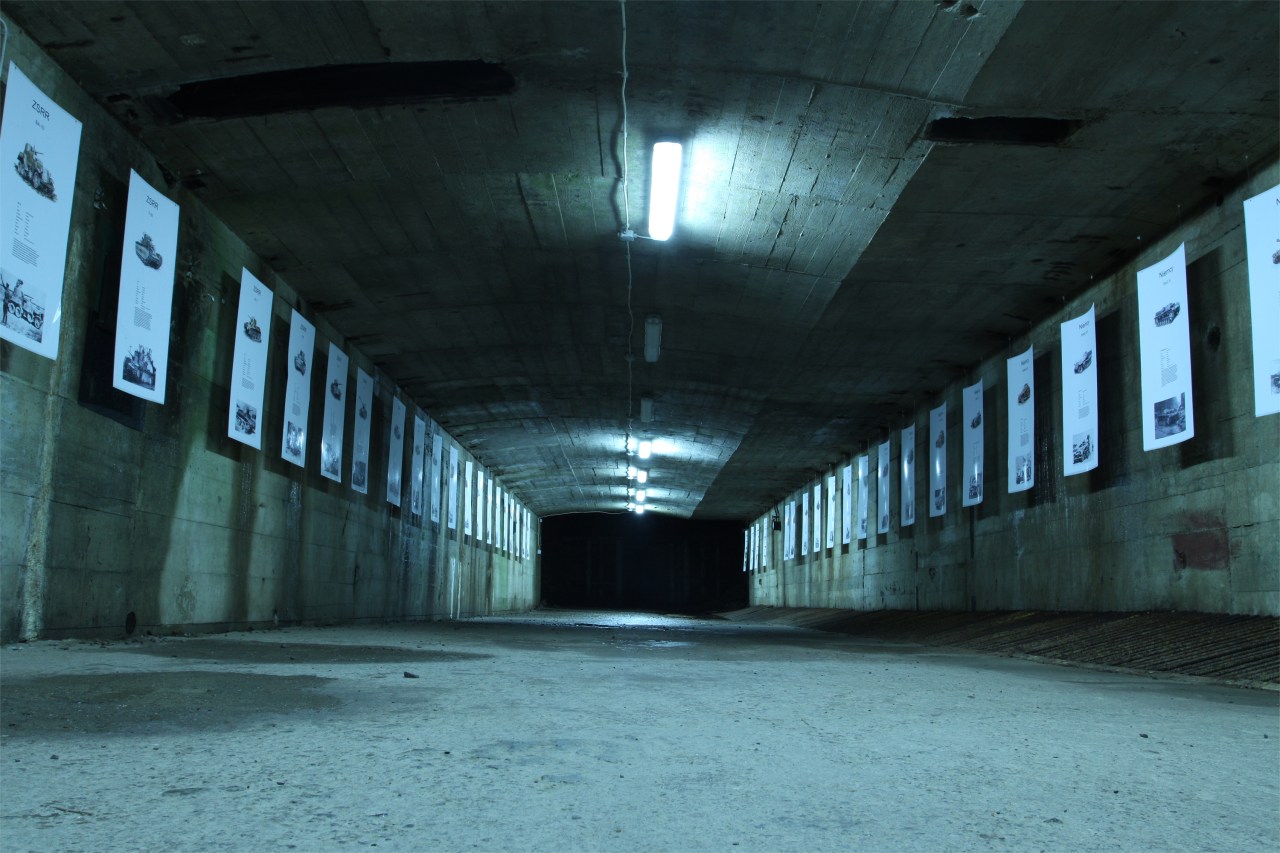
Project Riese: The Nazis’ Half-Finished Underground City
Were you aware that during the middle of World War II, the Nazis were working on an elaborate underground lair like you'd see in James Bond or Austin Powers movies?
It sounds like something out of a movie: A secret underground lair where an evil villain conducts his operations far away from natural light, immune from air attacks as he weaves a sinister plot of world domination. In 1962’s Dr. No—the first James Bond film ever—Dr. No worked from his underground base of operations as he tried to disrupt an American space launch with a top-secret radio-beam weapon. In 1997’s Austin Powers: International Man of Mystery, Dr. Evil worked his hilariously malicious hijinks from an underground bunker complete with laser-equipped sharks.
But were you aware that in the middle of World War II, the Nazis were working on something quite similar?
As the tide turned against the Nazis in 1943, Hitler and his engineers began building an elaborate underground city joined by tunnels where they would be able to conduct their war plans unimpeded by Allied bombers or encroaching Red Army troops.
Eighteen months later, overwhelmed by the advancing Soviets, the Nazis abandoned the project. None of the seven shelters and tunnel systems was completed, and they survived today in various states of disrepair. It is thought that if the Germans had kept up the war effort only another eighteen months, they would have completed this underground city, but war waits for no one.
Project Riese: German For ‘Giant’

The word “Riese” (prounced “REE-zuh”) means “giant” in German. And this was an ambitious project even by Hitler’s megalomaniacal standards: seven underground structures connected by tunnels totaling over 5.5 miles in length beneath the Owl Mountains of Lower Silesia and the opulent Ksiaz Castle in what was then Germany and is now a territory of Poland.
The Owl Mountains were chosen because they were composed of super-solid rock that could withstand the most aggressive Allied bombings. While this made it safe for the officials and troops who hoped to find residence there, it made the task of hollowing out the mountains that much harder.
It was estimated that to complete this massive underground city, over two million cubic meters of rock would need to be blasted out of the Owl Mountains. A little over eighteen months after the demolition began, the entire project was canceled with only half of the required blasting completed.
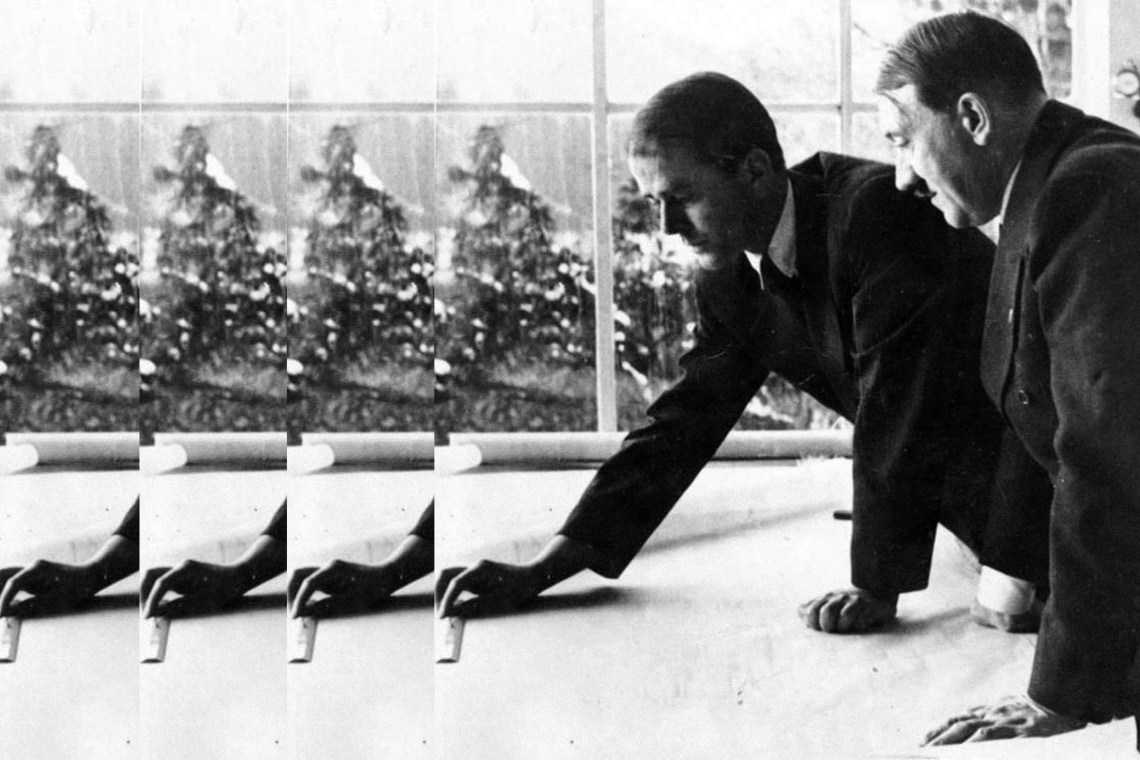
In April 1943 Hitler issued an order for the project to start. He hired Armaments Minister Albert Speer to run the project. In September of that year, Speer began talks with the newly created Silesian Industrial Company to make the project a reality.
But by May of 1945—a full month after Hitler committed suicide—Project Riese was halted as the Soviets swarmed eastward through Germany. The Nazis destroyed as many records regarding the project as possible, and it remains shrouded in mystery.
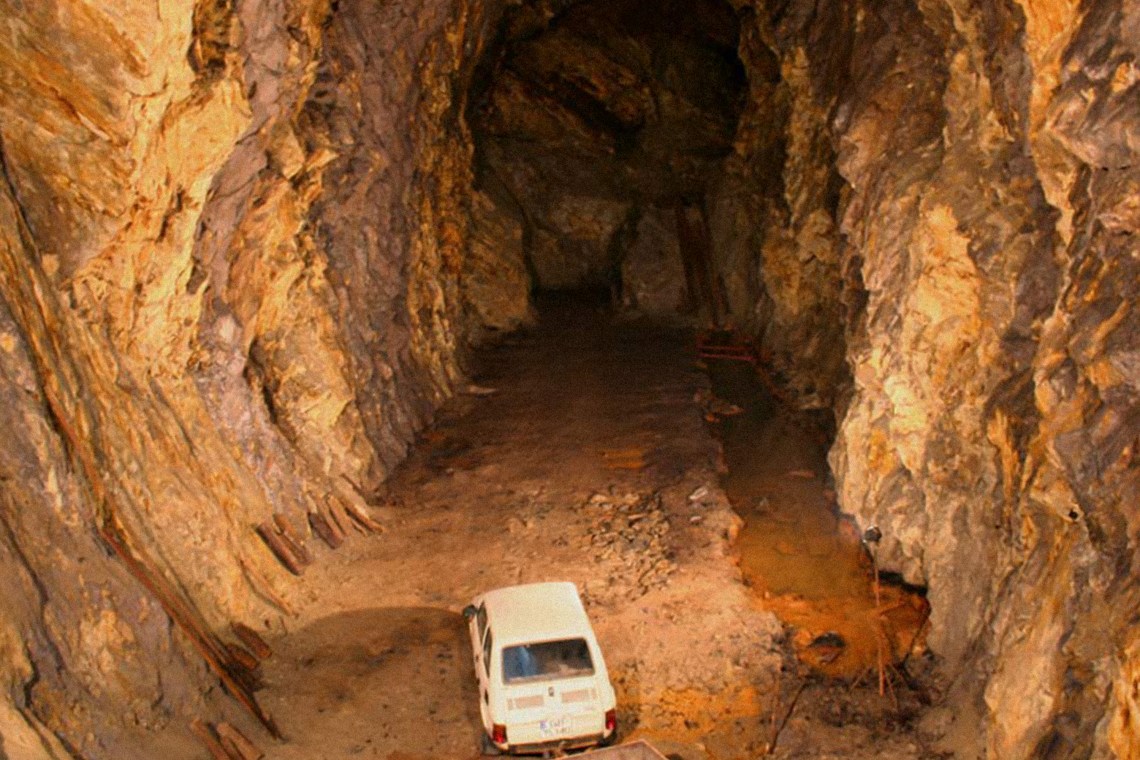
Was it supposed to be Hitler’s secret bunker…
In their postwar memoirs, Albert Speer and others insisted that Project Riese was intended to be Adolf Hitler’s spacious underground headquarters and a general hiding space for the Nazi top brass. But other researchers say that the manner in which this information was deliberately spread by notoriously unreliable sources is evidence that this was a purposeful Nazi misinformation campaign designed to deflect attention from Project Riese’s true purpose…
…or was it supposed to be a super-huge underground military base for nuclear tests, hypersonic jets, anti-gravity devices, and other “wonder weapons” such as the “Nazi Bell”?
Others suggest that the elaborate underground complex that Project Riese intended to build would have been a perfect safe space for the Nazis to conduct their endless and notorious military experiments:
• Nuclear testing would be safer, since the nearly impenetrable rock of the Owl Mountains would prevent any telltale emissions.
• The elaborate tunnel system could have been used to move around armaments, offices, and documents under the endless hail of Allied bombs.
• One theory claims that Project Riese was designed to provide an underground factory for the production of V1 and V2 rockets.
• Others speculate that the Nazis’ various anti-gravity experiments would have been much safer to conduct deep within manmade caves.
• There are unverified reports that the Nazis were seeking uranium deposits buried deep within the Owl Mountains.
• Then there was Die Glocke, AKA the “Nazi Bell,” one of many Wunderwaffe (Wonder Weapons) the Germans were developing under the cloak of secrecy. It was supposed to be about 12 feet high and seven feet in diameter, featuring counter-rotating cylinders “”filled with a mercury-like substance, violet in color.” Allegedly, five of the seven scientists who worked on this project died of mysterious causes.
And what was this weird-looking thing?
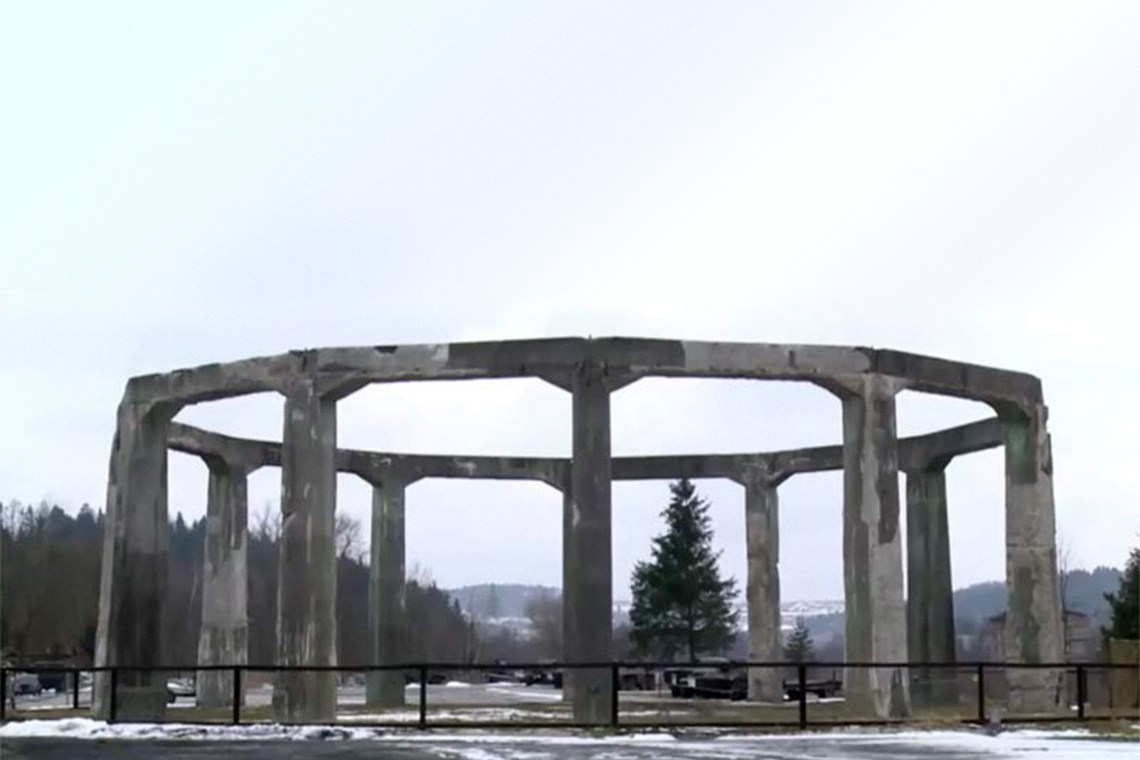
Described variously as the “Fly Trap” or “The Henge” (due to its resemblance to Stonehenge), this outdoors, above-ground remnant of Project Reise is variously said to be a UFO launching pad, an anti-gravity device, a time machine, or maybe just the humble remains of an industrial cooling tower.
What role did this beautiful castle play in this sinister plot?
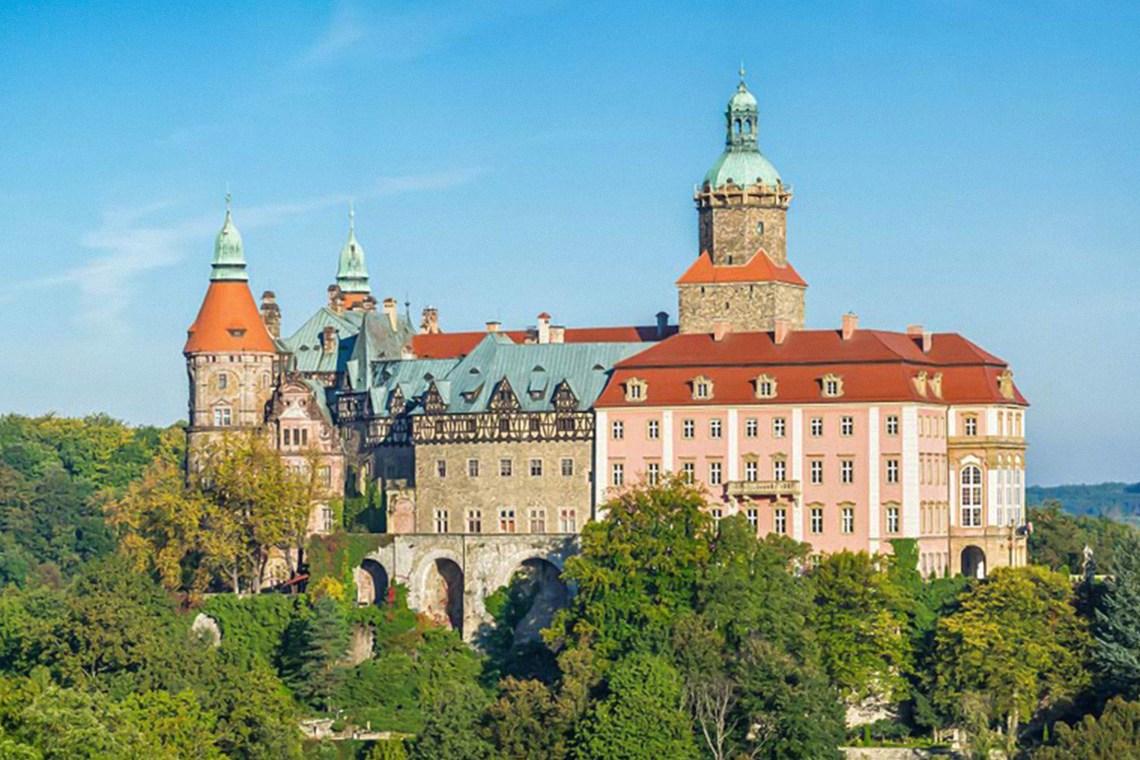
Ksiaz Castle is one of the most famous, beautiful, and regal castles in all of Europe. Its construction was completed in 1292 but the Nazis seized ownership of it in 1941. It has two series of underground tunnels running underneath it. The first is about 50 feet underground and is reachable via a lift on the fourth floor of the castle as well as an entrance by the gardens. The second tunnels were built as part of Project Riese and extended much further underground. It is thought that Hitler had direct access to the lower tunnels through an elevator in his quarters, and it is also thought that when Project Riese was completed, those tunnels would connect to the rest of the underground city.
Is the famous “Nazi Gold Train” buried somewhere in these tunnels?
Since its demise during the last gasps of the Third Reich, the dark passageways of Project Reise have spurred endless rumors about the alleged treasures hidden therein. Among these alleged treasures:
• Train cars that were rumored to be filled with Nazi gold that has never been accounted for since WWII ended.
• Works of art the Nazis had stolen from all the nations they’d occupied.
• The legendary “Amber Room” from St. Petersburg in Russia, removed and restored intact in a giant viewing room beneath Owl Mountain.
• The riches from Silesia’s noble von Schaffgotsch family.
The entire tunnel system was built by slave labor.
Although the Nazis were as good at destroying records as they were at keeping records, most data suggests that Project Riese was built entirely by slave labor.
Of the 8,995 prisoners who were identified, all were Jewish. Most came from Hungary, with the rest from Poland, Greece, Romania, and elsewhere.
Five thousand of the slave laborers died from typhus, malnutrition, disease, and exhaustion.
Fourteen of the prisoners were executed by German guards after failed escape attempts.
The mean life expectancy for a worker in these caves was four months.
It is said that children as young as 10 were put to work pushing mining cards and performing other forced menial labor.
Believe it or not, there are tours!
Of the seven tunnel systems that began construction under Project Riese, three are considered too dangerous for tourists. Three of the others, as well as well as Ksiaz Castle, are open for tours, and a couple of them even feature small gift shops. The curators of the Osówka tunnel system offers a basic walking tour as well as an “extreme” tour during which you are pushed along flooded tunnels in a giant metal tub while holding a torch and praying you don’t drop your iPhone into the cold water. ![]()







